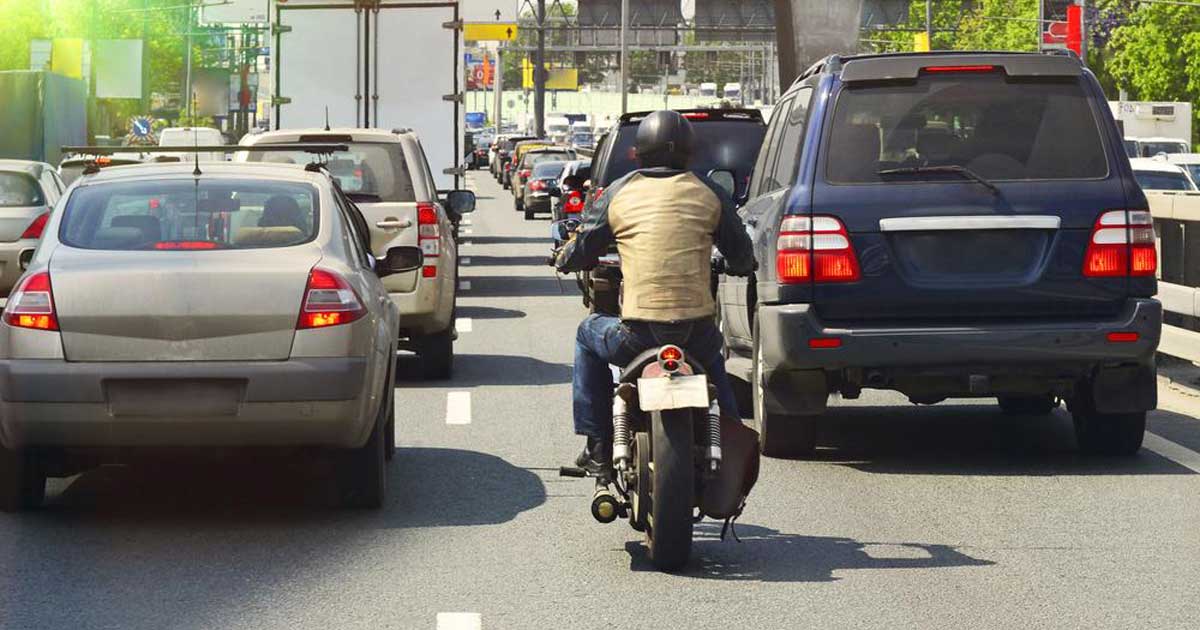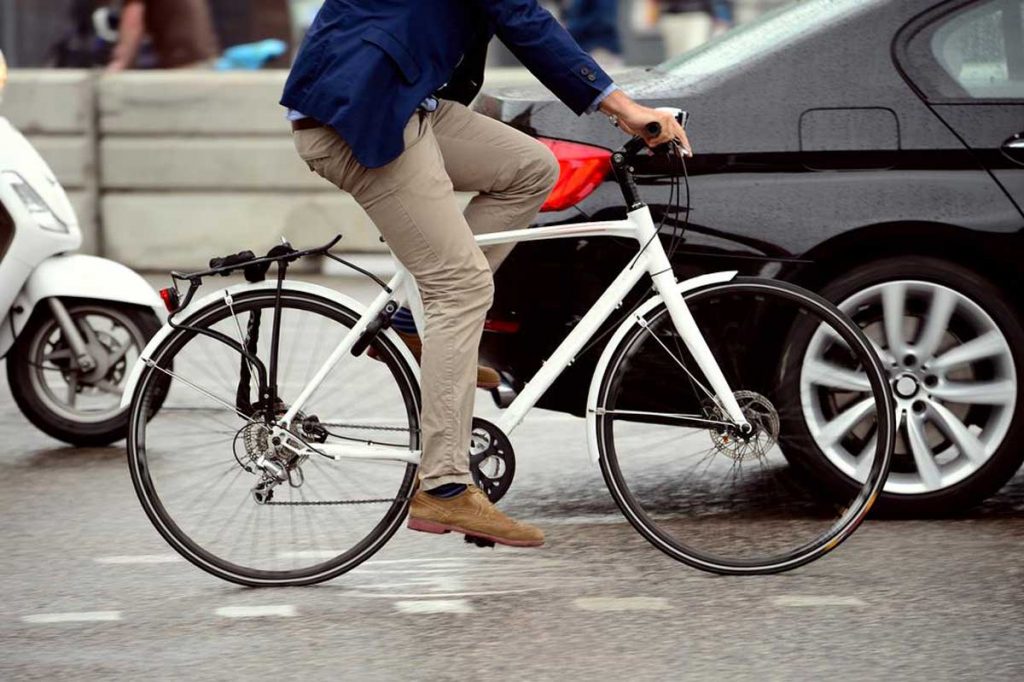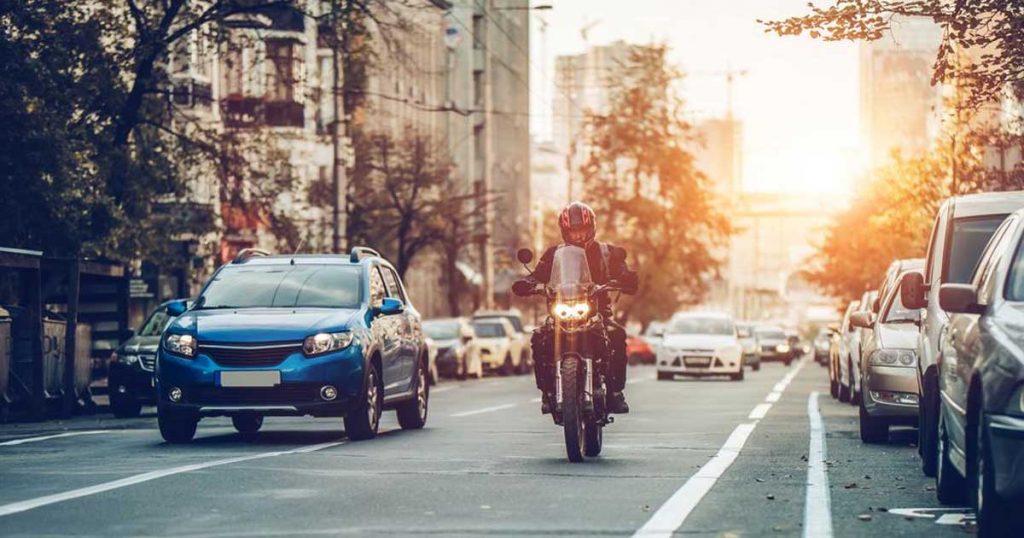6 Tips for Helping Drivers, Motorcyclists and Bicyclists Get Along

Rider Insider

Danny Reyes, Shipping Specialist, rider advocate, Angels fan and tailgate warrior. [email protected]
Sharing the Road: 6 Tips for Helping Drivers, Motorcyclists and Bicyclists Get Along
We all know that sharing is caring, but sometimes sharing the road can feel like learning to share your toys in kindergarten all over again. There’s often no love lost between drivers, motorcyclists and bicyclists, and thousands of lives are lost each year to traffic accidents involving bicycles and motorcycles.
Clearly, awareness and caution need to increase on all fronts so that vehicles of all types can share the road. How can we make America’s roads kinder and gentler for cars, motorcycles and bicycles alike? It’ll take a lot of understanding and patience, but it can be done—and these six tips will help us get there.
- Put down the phone.
The age of the smartphone has put us in a permanent state of distraction, even when driving. That just won’t do when you’re on the road, no matter what kind of vehicle you’re operating. The answer is to put down the phone and concentrate on the road.
If you really have to take a call or adjust your GPS, voice commands and Bluetooth headsets can help you do it without taking your eyes off the road or your hands off the wheel. For motorcyclists, a motorcycle headset communicator allows you to answer calls and change music using a voice activated Bluetooth helmet intercom so you can keep your hands on the bars where they belong.
- Follow the rules.
This one sounds like it should be incredibly obvious, but we all know that there are plenty of folks on the road who think the rules don’t apply to them. If we’re honest with ourselves, most of us can even admit that we are those people sometimes, so a better road starts with everyone making a commitment to play by the rules.
Traffic laws can be annoying, but they exist for everyone’s safety. So, don’t take them lightly and remember that the rules of the road apply to everyone, including bicyclists and motorcyclists. You can start by making sure you come to a complete stop at stop signs, obeying speed limits and slowing down to stop at yellow lights rather than gunning it to beat the red.
It can be particularly tempting for bicyclists to break or bend these rules, but when a bicycle is on a road designed for cars, it needs to operate according to the state’s rules of the road for bicycles. For their part, cars also need to respect bike lanes and not use them as passing or turn lanes.
- Watch for pedestrians.
Drivers, motorcyclists and bicyclists all have at least one thing in common: They can seriously injure or kill pedestrians if they’re not careful. That’s why it’s so incredibly important to pay close attention to crosswalks and other pedestrian safety features and to watch for pedestrians at all times when you’re operating a vehicle.
Keep in mind that pedestrians won’t always follow the rules, such as crossing at designated crosswalks. While it’s certainly annoying to have to stop for someone who’s jaywalking, the fact that you’re driving the larger, faster and heavier vehicle puts the onus on you to look out for pedestrians even when they disobey the rules.
- Maintain awareness in challenging conditions.
There are many sources of distraction that have nothing to do with smartphones, including plain, old-fashioned inattentive carelessness, and they’re the source of many accidents. The following situations all demand particular care to avoid getting into an accident:
- Opening a car door into traffic
- Operating your vehicle in heavy traffic
- Maneuvering around large vehicles such as tractor-trailers
- Operating your vehicle in rain, snow or other adverse weather conditions
These are also the times when it’s most important to pay attention to other types of vehicles on the road and remember that other types of vehicles may need to deal with these conditions in different ways than you do. Car drivers, in particular, may want to temporarily turn off the radio and ask passengers to hold their conversation until they’re comfortable again.
- Don’t let road rage get the better of you.
Never challenge an aggressive driver on the road in any way. The moment you start to escalate the situation, you make it far more dangerous for yourself and everyone else on the road. You never know what an aggressive driver’s mental state might be or how they might respond to your actions, so don’t return any rude gestures, follow them or make eye contact.
If someone is driving in a threatening manner toward you, such as repeatedly tailgating you or pulling up next to you and gesturing, try to move away from them as quickly as you safely can. If they continue, pull over in the nearest crowded public place that you can find and call 911.
- Be predictable and signal your intentions.
Nobody likes a surprise when they’re on the road. No matter whether you’re piloting a car, truck, motorcycle or bicycle, the best course of action is to be as predictable as possible and to let people know what you’re doing well in advance.
The simple and easy act of using your turn signals will make everyone’s experience considerably safer and more pleasant, and bicyclists should learn to use bicycle hand signals to communicate their intentions. In general, it’s always best to avoid erratic behavior like suddenly changing lanes or accelerating or decelerating out of nowhere. Bikes and motorbikes will sometimes have no choice but to weave to avoid obstacles, but it should be avoided whenever possible.
Best practices on the road can be a little bit different depending on what kind of vehicle you’re operating, but there are a few common principles that apply to everyone: respect, empathy, tolerance and caution. Base your actions on these principles when you’re on the road and you’ll be doing your part to create the culture of compassion we all need.

